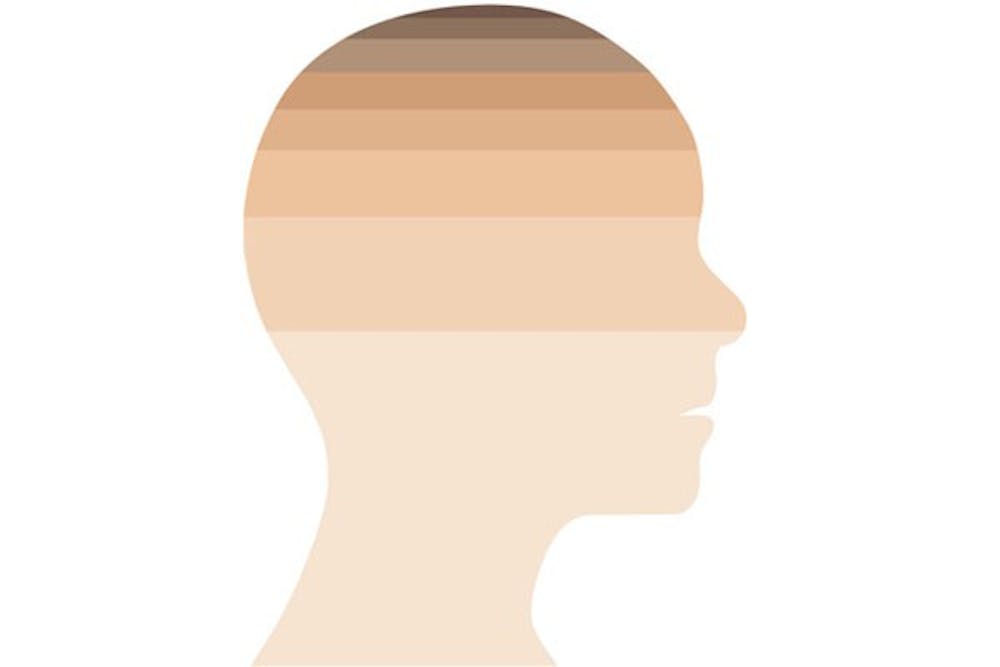Students identifying themselves as black made up 4.4 percent of AU’s fall 2010 undergraduate population, roughly 9 percent less than the 2009 national college average.
According to AU’s Office of Institutional Research and Assessment, AU’s undergraduate population in fall 2010 was:
• 58.58 percent white • 6.97 percent international students • 6.29 percent Asian • 5.96 percent Hispanic • 4.4 percent black • 3.2 percent multiracial • 0.38 percent American Indian • 14.22 percent unknown
According to the U.S. Census Bureau’s most recent data, in 2009 undergraduate students enrolled in four-year U.S. colleges were:
• 67.98 percent white, non-Hispanic • 13.59 percent black • 10.12 percent Hispanic • 5.94 percent Asian
Black Student Alliance President Ariel McMillan said she finds it awkward and disappointing when she’s often the only black student in her classes.
“I just wish I saw more people like me,” McMillan said.
McMillan and Dshawna Bernard, president of Caribbean Circle, said they think prospective students choose other schools because of low enrollment of domestic minorities at AU.
The Caribbean Circle is an AU organization that seeks to foster awareness of Caribbean culture.
“When you come on a campus and you don’t see people of your own, it’s easy for you to not feel a willingness to apply here,” Bernard said.
AU’s Strategic Plan includes a goal to increase enrollment of underrepresented domestic minorities in the freshman class by 10 percent.
A domestic minority is any U.S. student who states his or her race as anything other than Caucasian, according to Director of Admissions Greg Grauman.
Grauman said AU admissions representatives can travel to culturally diverse areas to recruit future students.
He said a commitment to shift more financial aid dollars from merit scholarships to need-based aid could help increase domestic minority enrollment.
As outlined in the Strategic Plan, these changes aim to provide a greater number of undergraduates with financial packages to meet 100 percent of their aid needs.
In addition, the University hopes to raise $1 million for student scholarships.
Jeremiah Headen, a senior in the School of Public Affairs and former president of the AU National Pan-Hellenic Council chapter, said at least 10 of his friends left AU because they felt a lack of community, services and support for minority students.
He said a lack of funding causes major problems when tuition increases, but financial aid packages do not expand to match these changes.
“The school gave them money to come here, but it didn’t give them money to stay,” Headen said.
AU’s diversity not indicative of D.C. population
Last September, Newsweek ranked AU as the sixth most diverse school in the country for its international student population, range of faiths and gay-friendly campus.
College Prowler gave AU a “B” in diversity, saying the University is not representative of D.C.’s cultural and racial mixture.
Newsweek ranked George Washington University 14th for diversity.
GW surpasses AU in racial minority enrollment with a population that is 10 percent Asian, 7 percent African American and 7 percent Hispanic.
D.C.’s 2009 population was 40.6 percent white and 54 percent black, according to U.S. Census Bureau estimates.
Bernard said when she transferred to AU, she believed the student body would be more diverse than it really is.
“When I walk around D.C., I see diversity,” she said. “When I came to AU, I didn’t see a reflection of that.”
Bernard said she believes AU needs to focus its recruitment efforts on D.C. high schools.
“We need to take care of home,” Bernard said. “We should not have a school down the street, or anywhere in a five-mile radius of AU students, being nonchalant … and feeling as though they cannot come here when they go on the campus.”
Although McMillan said she believes that AU should continue targeting D.C. schools, she said AU needs to increase recruitment in bordering states as well. She would also like University administration to speak with current black students and community members about the plan and ask for feedback on how to increase minority enrollment at AU.
McMillan said she is optimistic about the plan and AU’s future, but it might take a while for the changes to noticeably manifest themselves.
“People will come, but you probably won’t see a big increase until you see more diversity on campus,” she said.
Staff writer Paige Jones contributed to this article.
news@theeagleonline.com
IN NUMBERS
American Indian 25 students — 0.38%
Asian 419 — 6.29%
Black 293 — 4.4%
Hispanic 397 — 5.96%
International 464 — 6.97%
Multiracial 213 — 3.2%
Unknown 947 — 14.22%
White 3901 — 58.58%
Total 6659 — 100%
Data made up of fall 2010 undergraduate population
SOURCE: OFFICE OF INSTITUTIONAL RESEARCH AND ASSESSMENT





